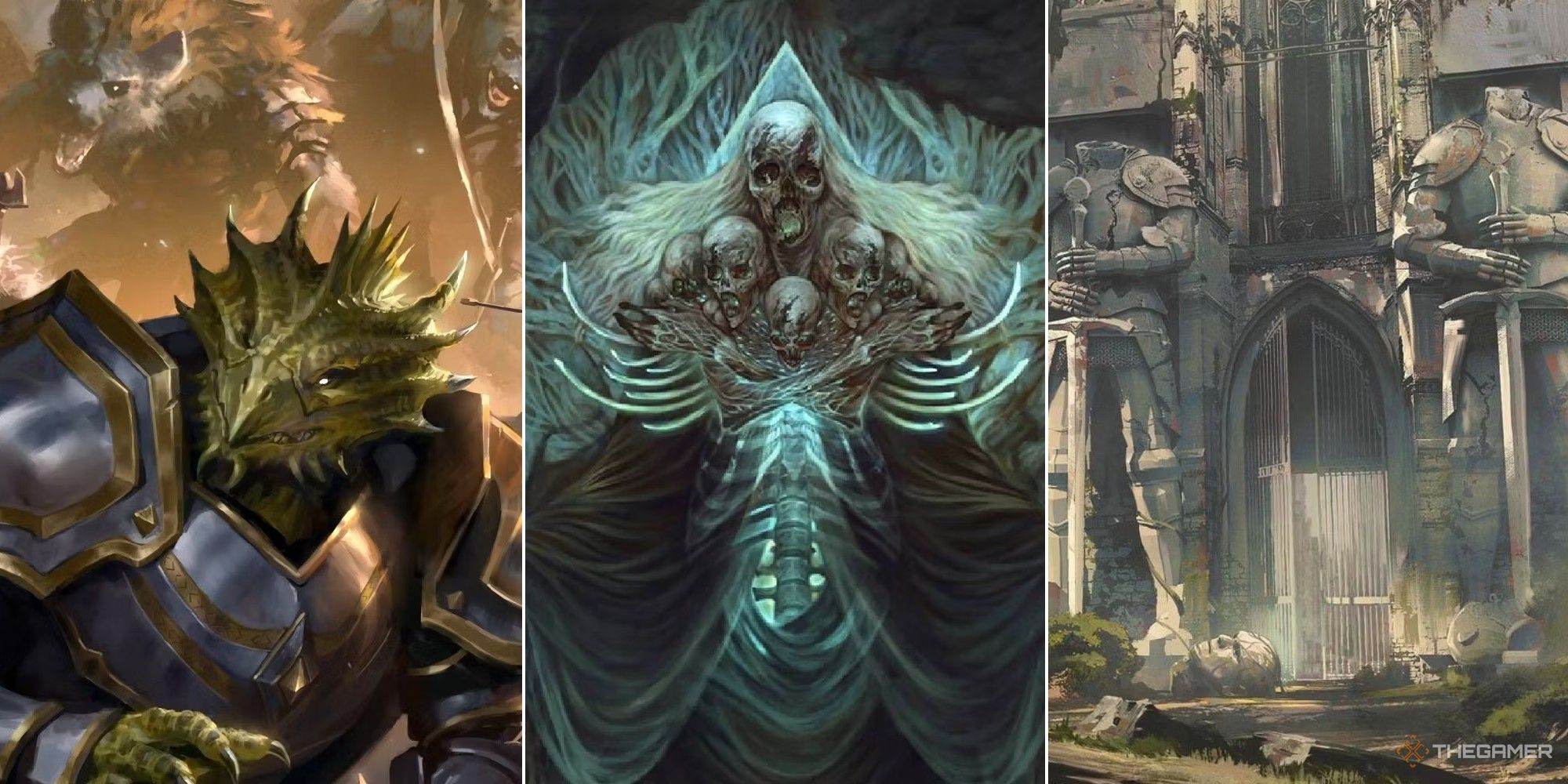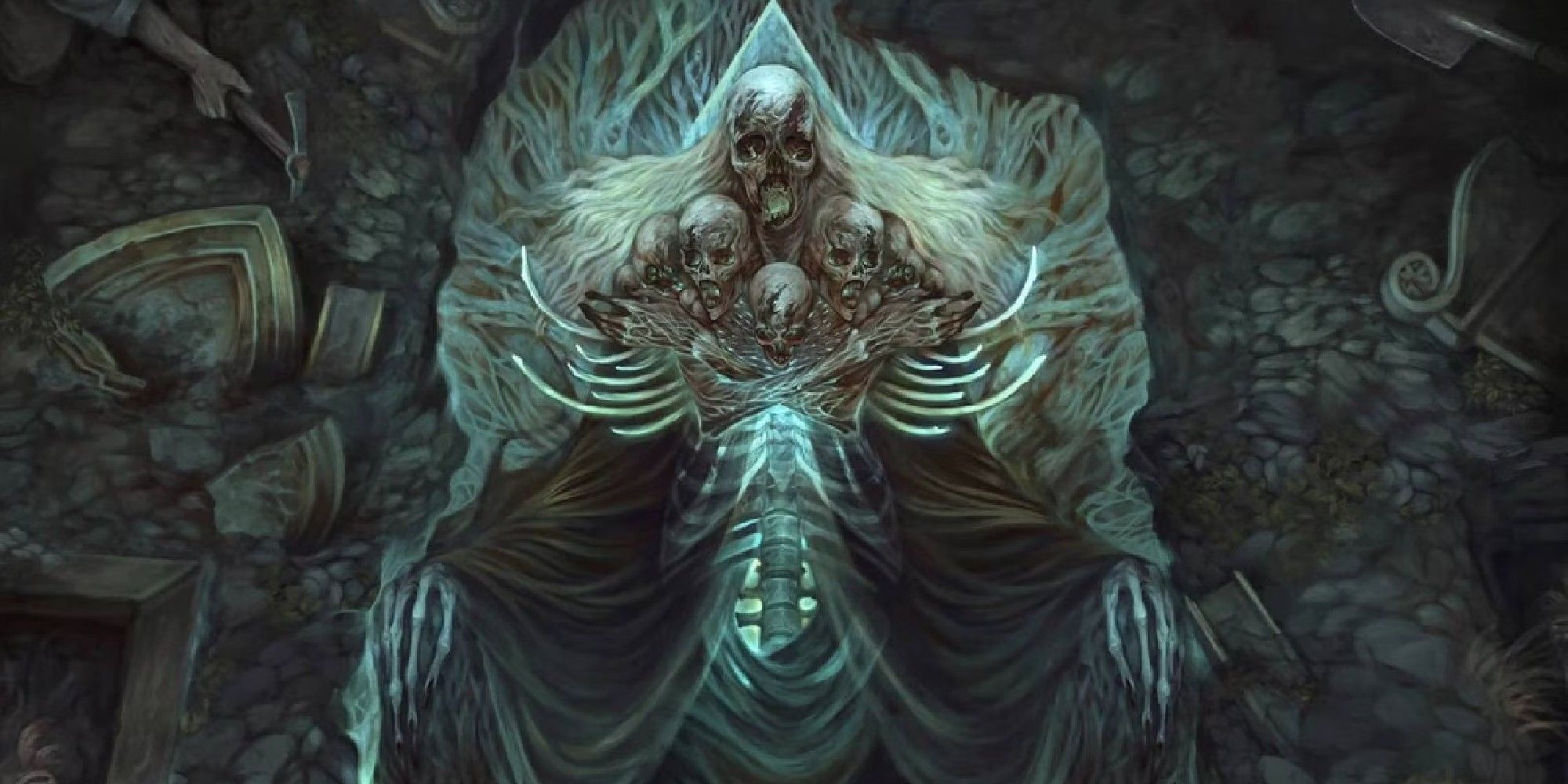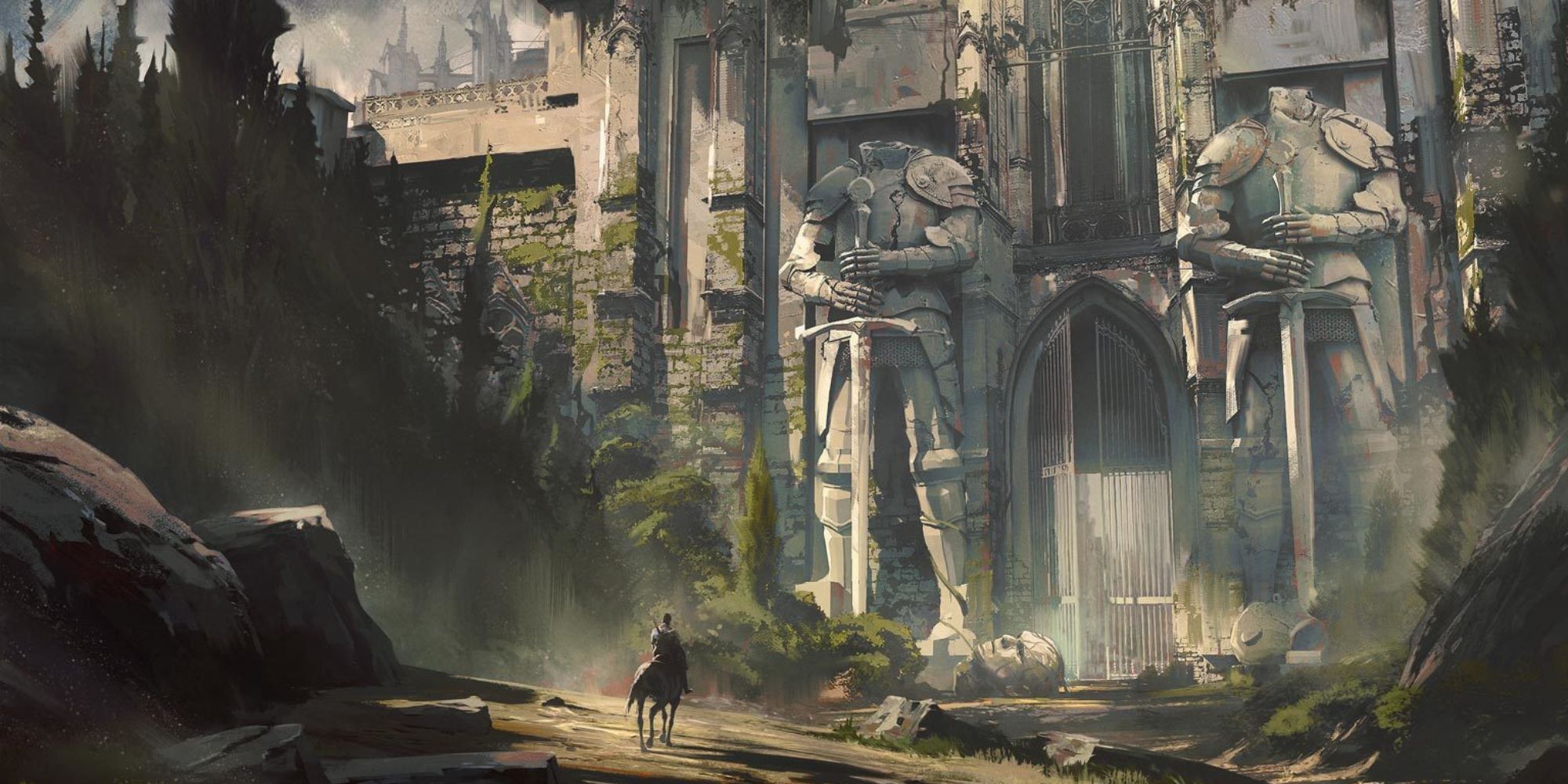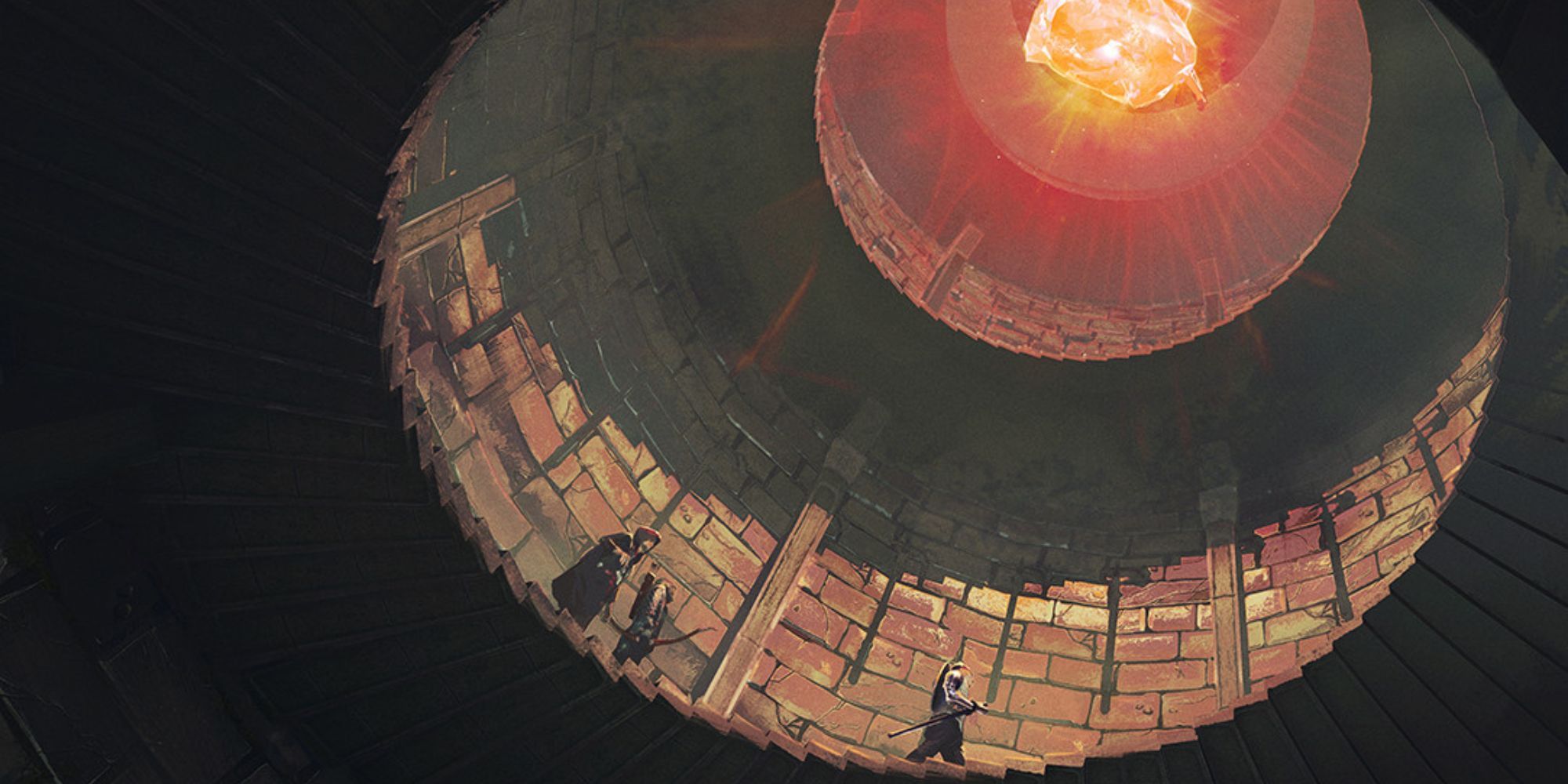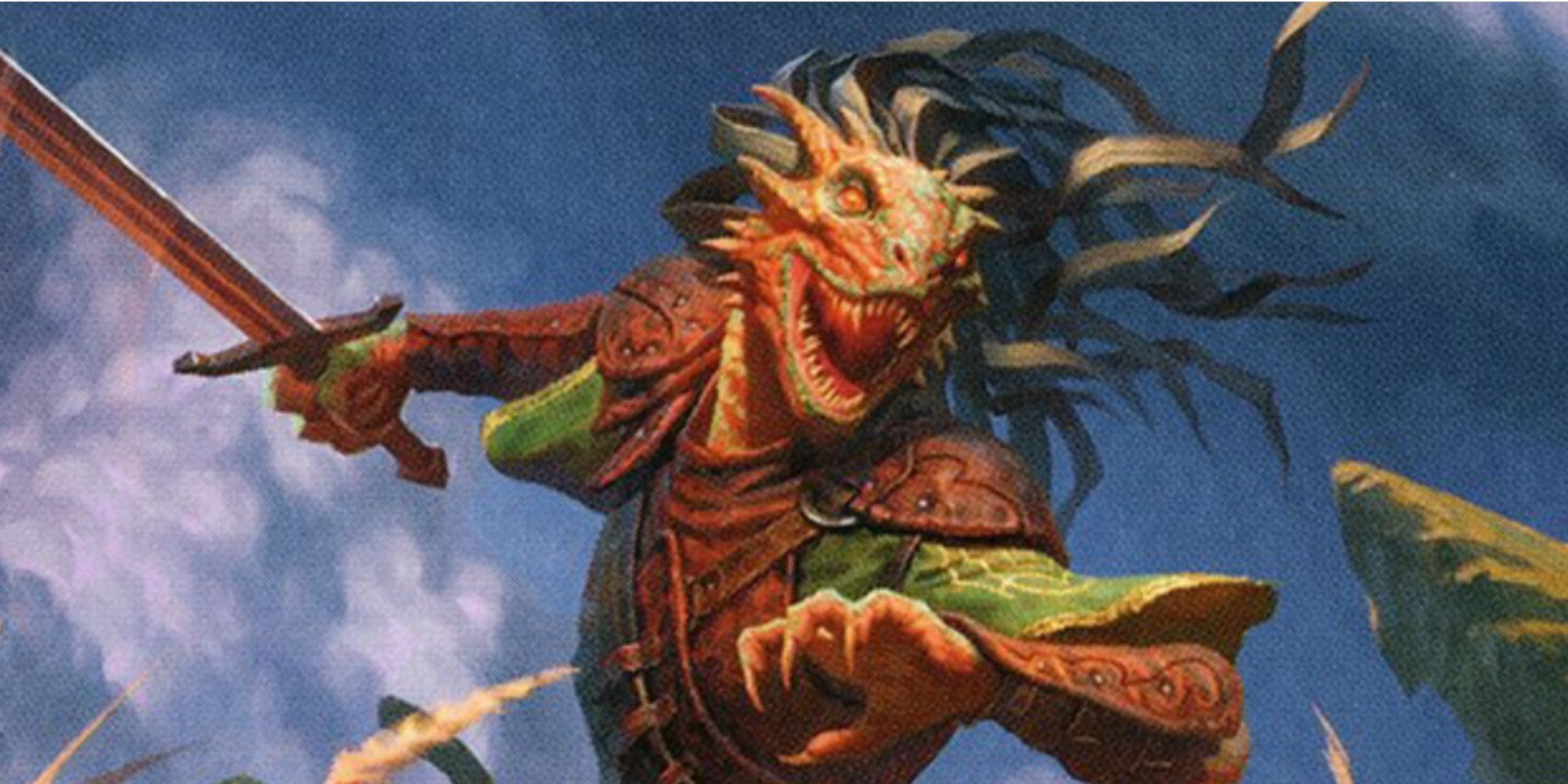Quick Links
- What Started The Time Of Troubles?
When preparing the backstory of your campaign in Dungeons & Dragons, you can go in one of two ways: you either take the canon lore, or make up your own. While creating your own world is great fun, sometimes you need a solid base like the one written in the official canon.
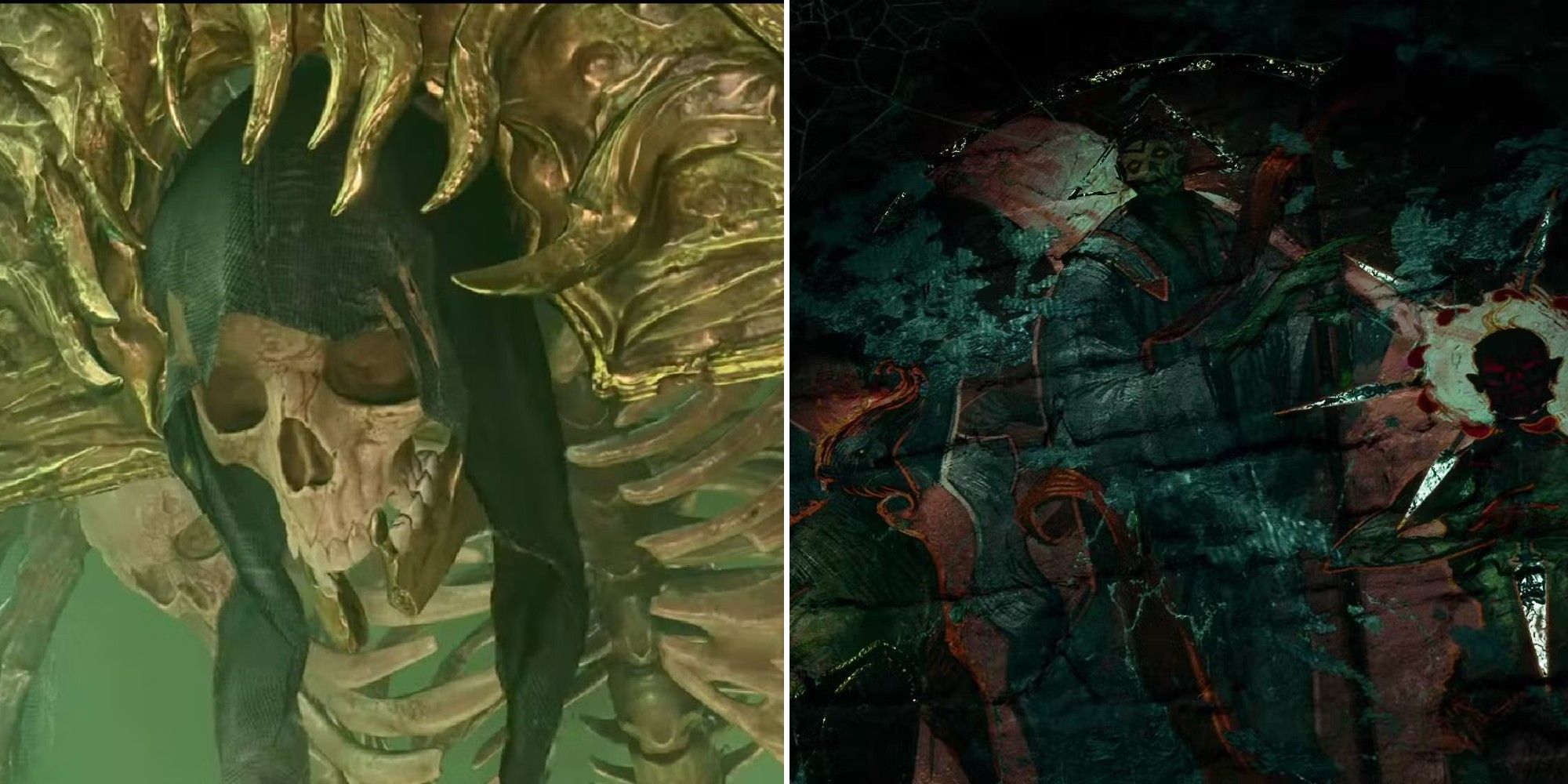
Baldur’s Gate 3: Who Are The Dead Three?
Discover more about Bane, Bhaal, and Myrkul.
If you’re exploring the stories of the past, then there’s no moment in time more crucial than the Time of Troubles. It was a time of uncertainty, where the gods were no longer divine and walked among mortals, causing all kinds of havoc.
What Started The Time Of Troubles?
It all started when Myrkul and Bane, gods of Death and Tyranny respectively, hatched a plan to steal the Tablets of Fate from the overgod Ao. They believed those two Tablets held the power of the overgod, but they were mistaken; the Tablets held divine rules about gods and kept the planets Abeir and Toril from clashing with each other, but they had nothing to do with Ao’s power.
Abeir and Toril were originally one single planet, but were separated by Ao as a way to end the disputes between gods and primordials, giving one planet for each to oversee.
Once the Tablets were stolen, Ao demanded their immediate return. As no gods came forward, Ao decided to punish them all, not necessarily out of spite, but because he felt the gods weren’t taking their roles seriously.
The gods saw their mortal followers as little more than slaves, valuing not their worship nor allegiance. Since the power of the gods was not dependent on mortal devotion at the time, the gods felt like they had ownership over mortals, which was never Ao’s vision.
The Punishment
Ao sentenced the gods to walk the mortal realm, devoid of most of their divine power, and it would remain so seemingly until the Tablets were returned. While their power remained unmatched by most mortals, they were still vulnerable, and it was stated that any deity slain wouldn’t be resurrected.
The two biggest effects of this were felt by users of arcane and divine magic. Using arcane magic became extremely volatile without the likes of Mystra to regulate it, and divine magic would not work at all unless the user was near their patron.
Another consequence of the Time of Troubles was that mortals were now aware of Ao’s existence, since before then no one knew the gods had an overgod they answered to.
Many gods died during the Time of Troubles, but it wasn’t permanent for the most prepared. Tiamat, for example, was slain by her nemesis Gilgleam, but instead of dying, she simply split into three Dragons; she made sure Gildleam’s death was actually permanent once she reformed.
The only god to be resurrected by Ao himself (momentarily disregarding his own rules) was Torm, a god of Justice who died in battle against Bane. When Torm died while performing his divine duty, Ao restored him to life.
Bane also managed to avoid permanent death, since he hid part of his essence inside his half-demon son. Years later, he was resurrected, destroying his son’s life to breathe anew.
Other gods died without most mortals noticing, like when Shar murdered Ibandrul, who held dominion over dark caverns. For many years, priests kept worshiping their dark god, Ibandrul, without knowing that their prayers were going to a darker goddess still.
Return Of The Tablets
Mystra, goddess of magic, tried to return to divine prominence by climbing the Celestial Stairway, yet she was destroyed by Helm, the only god allowed to keep his divinity and guardian of the Stairway. Some time later, she was reformed into the mortal Midnight, and she led a group of adventurers in search for the Tablets.
Among her companions were Cyric and Kelemvor, who aided her in the battles against Myrkul and Bhaal. Cyric was a treacherous but skilled individual, and he more than proved himself by slaying Bhaal, the god of murder.
Through many battles, the group also managed to bring Myrkul down and traveled to the Celestial Stairway to return the Tablets. Cyric, however, wanted the credit for himself, and managed to kill Kelemvor before they reached an audience with Ao.
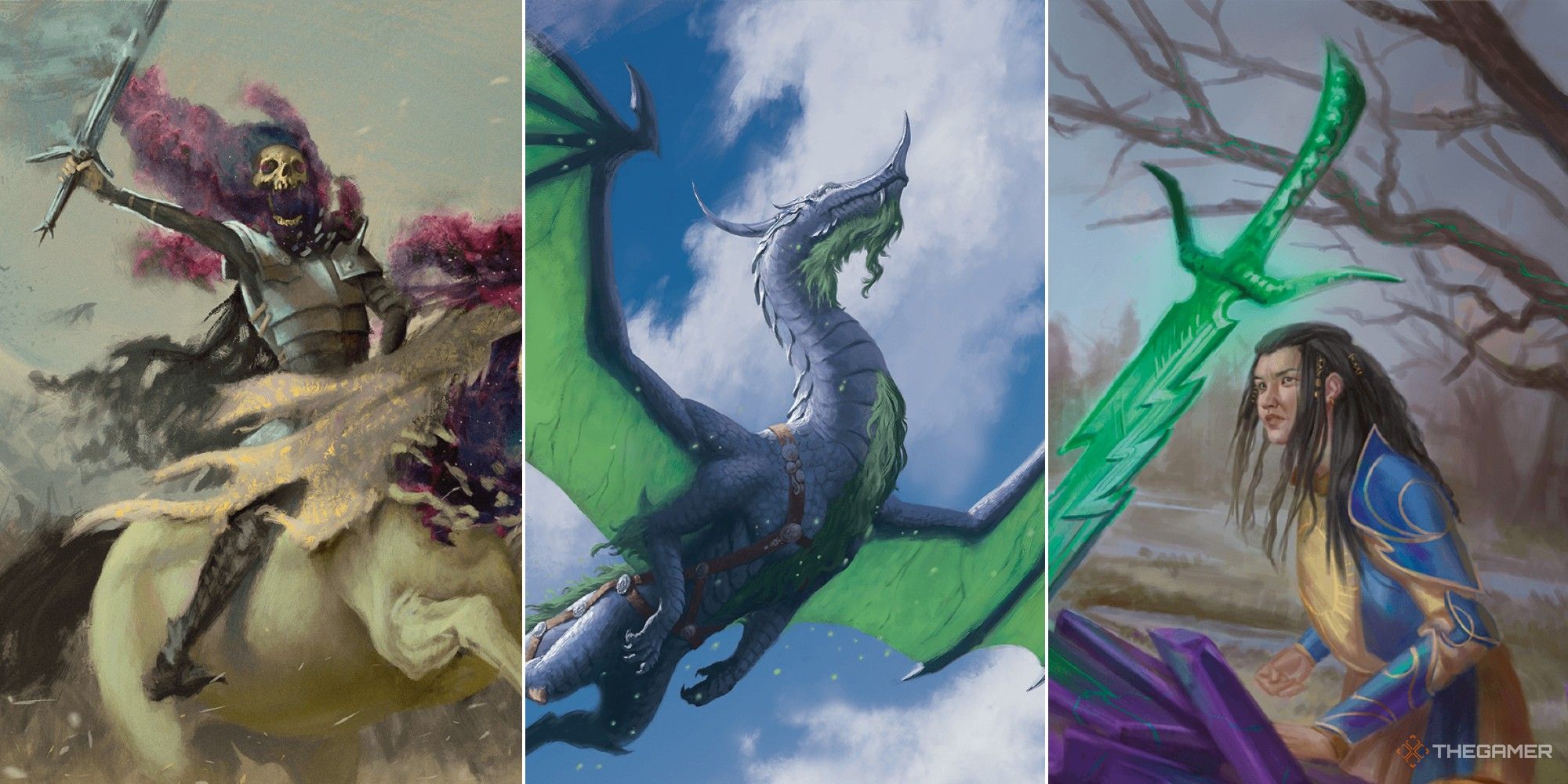
Dungeons & Dragons: All Factions In The Book Of Many Things, Ranked
The Book of Many Things introduces several factions for D&D; we rank them to determine which is the best faction tied to the deck.
Ao accepted the Tablets, putting an end to the Time of Troubles by destroying them. This would have lasting repercussions within the worlds of Abeir and Toril, which started to merge together without the protection from the Tablets, but those perils are part of other eras.
Ao rewarded Cyric and Midnight with godhood. Cyric gained governance over the entire death portfolio, making him one of the most powerful gods at the time, and Midnight was restored to Mystra, recovering her domain over magic.
Kelemvor eventually led a revolt within the city of the Dead, in the Outer Plane of Hades. The revolution ends with Cyric being removed from the Dead pantheon, and Kelemvor being ascended as a just God of the Dead.
Cyric’s downfall wasn’t only the work of Kelemvor, but also due to the gods Bhaal and Myrkul not being really dead. They prepared for resurrection during the Time of Troubles, Bhall via his Spawn and Myrkul thanks to his Crown of Horns, so when they came back to life they took their powers back from Cyric, leaving him considerably weakened.
What Came After
With the destruction of the Tablets began the Era of Upheaval, merging the worlds of Abeir and Toril and generating all kinds of turmoil. The merging was a slow process, but was greatly accelerated when Cyric (aided by Shar) murdered Mystra.
Among the most destructive effects were areas with magic not functioning properly or not at all. This was already happening before the death of Mystra, but the ten years between her death and resurrection made the wild magic effects much worse.
Eventually, Ao would remake the Tablets of Fate, severing the link between Abeir and Toril. One of the biggest impacts of this era was the introduction of Dragonborn into Toril, a species of humanoids that are descendants of the mighty Dragons.
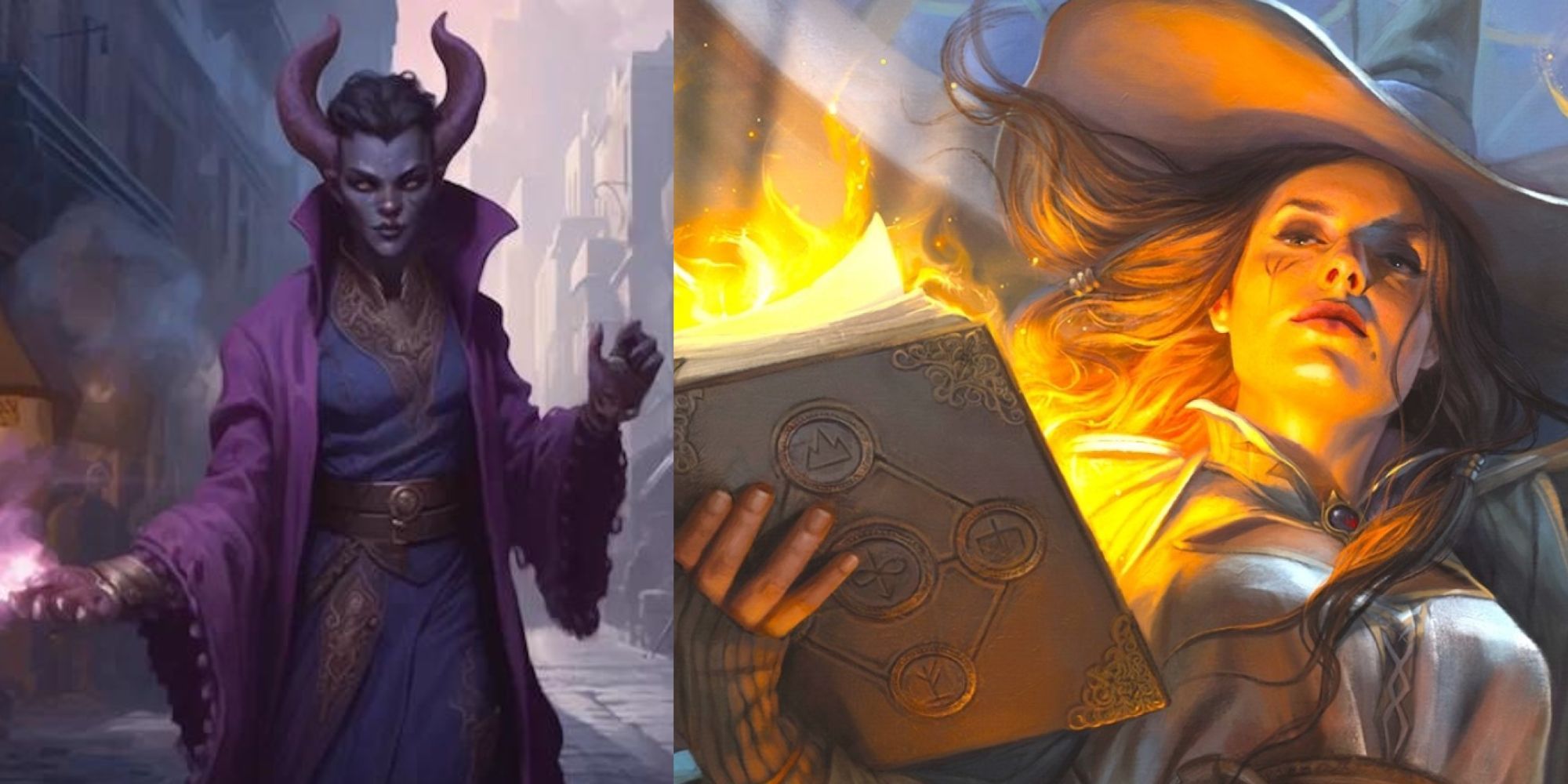
Dungeons & Dragons: What’s The Difference Between A Wizard, Warlock, And Sorcerer?
Discover the key differences between these spellcasters.

